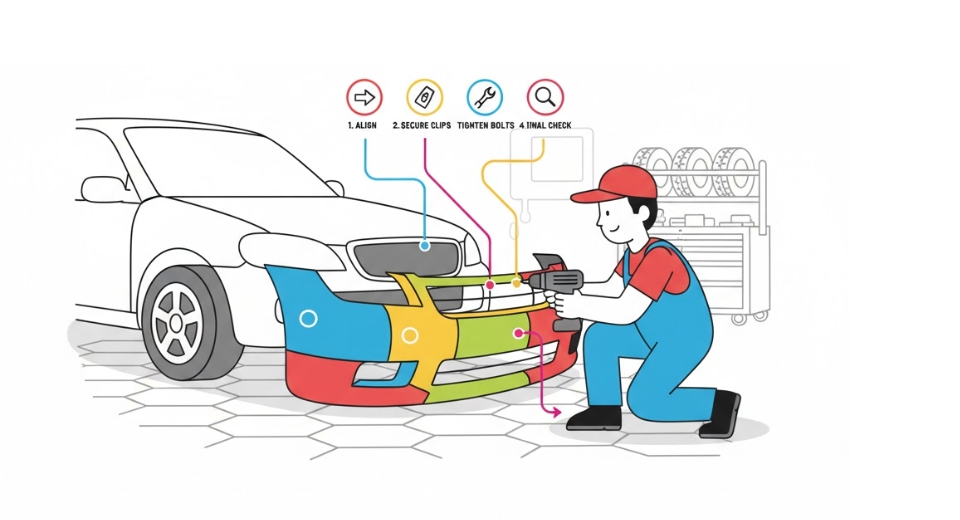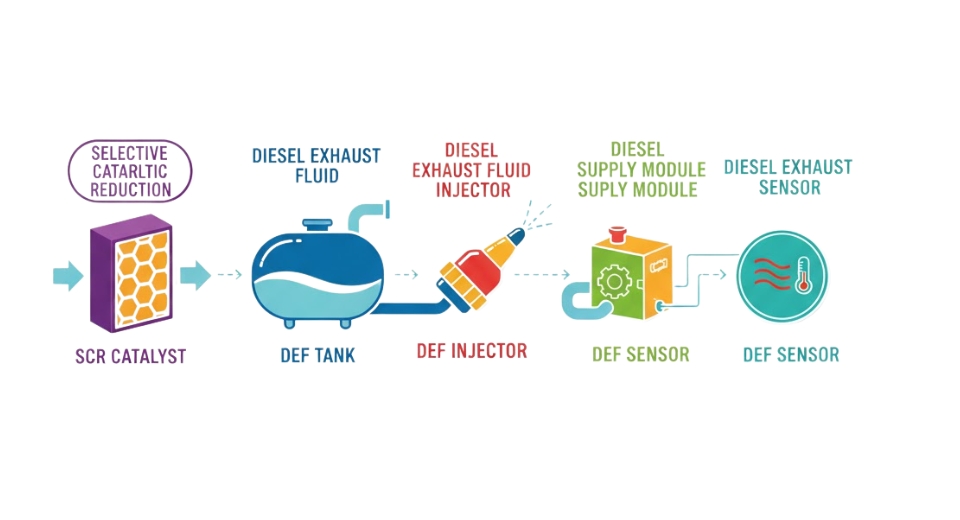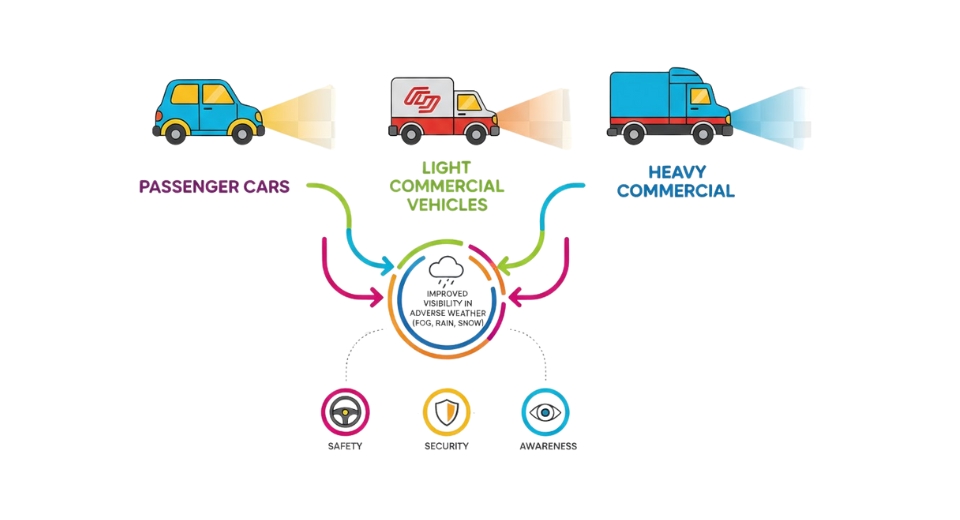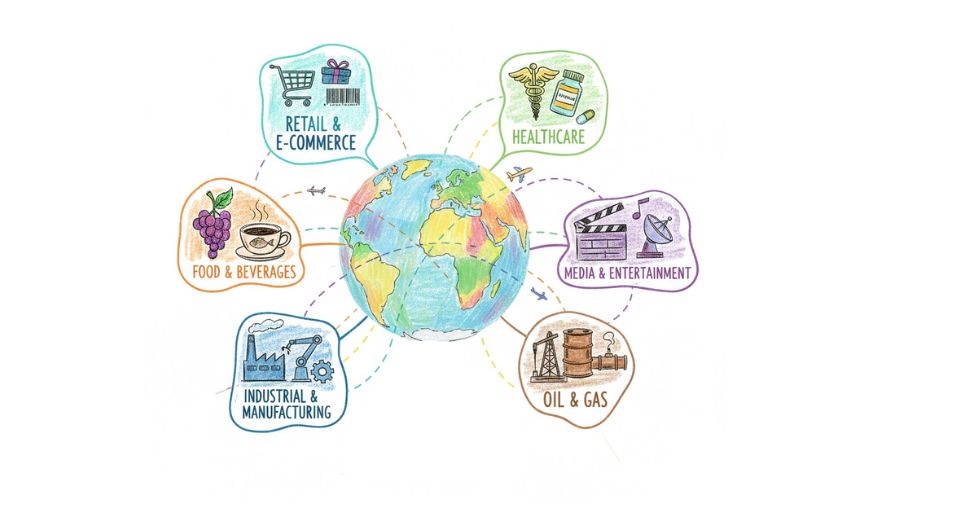MARKET OVERVIEW
The Global Steel Rail market plays a crucial role in the railway industry due to the fact that steel rails play an important role in the construction and maintenance of tracks in various parts of the world. This particular market will continue to face challenges based on the continued growing demand for efficient systems for passenger and freight transport. Steel rails are very strong, long-lasting, and durable. They can be used for laying down tracks that can resist the weight of trains and the impact of various weather conditions.
The steel rail industry has been fundamental to the infrastructure development of countries and regions. Railways have been the primary mode of transport in many places. With increasing urbanization and investments in expanding transportation networks in countries, the Global Steel Rail market is likely to witness steady growth in demand. The material is strong enough to ensure that railways can work for long periods without the need for frequent replacement or repair. Steel rail production and subsequent use are a core part of the expansion of public transportation systems, especially in areas looking to modernize their infrastructure and reduce congestion on roads.
In terms of scope, the market for steel rails encompasses different sectors, ranging from heavy railways used for freight to passenger transit systems serving large populations of urban dwellers. Geographically, the application of steel rails is wide. The demand comes both from the developed economies in which the rail network is being upgraded and emerging markets that are still developing their transportation frameworks. Moreover, the scope of this market also covers various grades and types of steel according to different specific requirements such as high-speed rail, freight lines, and metro systems. As the countries increase their railroad infrastructure, there will be a proportionate increase in the demand for steel rails.
The market can also be divided into different types of rails produced. These will include flat-bottomed rails for conventional tracks, while high-speed rails and all other special types will also be featured. Innovations in rail manufacturing processes are expected to contribute to the improvement of quality and performance of steel rails, ensuring that they can satisfy the needs of modern transport systems. The sophistication in rail transport, especially for high-speed rail projects, will necessitate the design and material composition of steel rails to be optimized by rail manufacturers.
Alternative materials will also compete more strongly in the market as the push for sustainable infrastructure grows stronger. Though steel rails will remain as the dominant choice because of their reliability, there might be innovations in alternative rail technologies that may offer new opportunities or challenges in the Global Steel Rail market. Recycling practices will also be a factor to consider as sustainability grows in importance in the production process.
The Global Steel Rail market will be very significant in the development of transportation networks around the world. Its importance will continue, not only in established but also in emerging economies, thereby making the market for steel rails grow as the world continues to require durable high-performance railway systems. Technology, sustainability, and the global desire for efficient and effective transport solutions will define this industry’s future.
Global Steel Rail market is estimated to reach $1,353.8 Million by 2031; growing at a CAGR of 4.3% from 2024 to 2031.

GROWTH FACTORS
The global steel rail market is expected to grow a long way in the coming future with various developments and prospects going forward. Investment in global rail infrastructure is one among the major factors driving such massive growth. Governments and even private organizations have realized that high capacities to relieve road congestion and high city growth rates. The increasing urban areas demand efficient networks of transportation, and hence, railways are considered a viable, cost-effective, environment-friendly solution. In addition, the growing number of high-speed rail projects within different regions is fast-pacing the demand for such specialized steel rails. Such projects will require materials that can endure high wear and tear, making the demand for steel rails critical in their success.
Despite a promising outlook, the market has significant challenges. One is the significant high cost of initial production and installation of steel rails. Such costs become unbearable for resource-poor regions. Also, operation of rail networks in extreme weather conditions is challenging. Maintenance costs and complexities of frequent complicated maintenance work can deter investment in some areas. Issues such as these will form the utmost agenda for the growth of this market and making it accessible in various economic contexts.
Future prospects indicate that innovation will lead in defining the steel rail market. The focus is growing in developing sustainable and longer-lasting steel alloys. These promise to reduce environmental impact as well as lowering long-term maintenance costs, thus opening a win-win situation between the operator and consumer. Such development opens avenues towards even greener infrastructures matching the sustainability goals of the world, thus allowing for new opportunities in the market.
With changing transportation demands, steel rail is expected to innovate and flourish. The prospect of revolutionizing the way people and goods move across regions by overcoming urbanization issues promises the market to remain core. It will be on growth course if it is possible to overcome cost-related hindrances and capitalize on innovation from material science. Only with continued investment and technological advancement can this worldwide steel rail market support the future transport systems sustained in being efficient and environmentally friendly to the global economies and societies.
MARKET SEGMENTATION
By Type
The Global Steel Rail market is the crux of transportation and infrastructural development around the globe. Steel rails are an essential tool that ensures smooth rail network operations and allows for safe travel of passengers as well as the transportation of commodities. Therefore, in such a context, the demand for steel rails is expected to remain steady in the light of technological progress and efficient mass transit systems. Further, this market can be classified based on type as heavy rail, light rail, crane rail, long welded rail (LWR), high-speed rail, and short rails that have distinctive applications and that contribute to the development of advanced rail networks. Heavy rail is usually so strong that one finds it majorly used for serious applications like freight transport.
As international trade increases, heavy rails are most likely to be in great demand for the movement of such goods. Light rail is increasingly used in urban transit systems, especially by highly congested cities trying to cut down congestion and promote sustainable travel. A light rail system is, therefore indicative of the focus shifting towards leaner carbon footprints, a crucial issue for societies around the world. Crane rails are another major type, widely used in industrial applications like ports and warehouses. Such rails are designed to carry heavy equipment such as gantry cranes that enable smooth execution of operations in massive material handling units in industries. Seamless-structured long welded rails reduce maintenance requirements and increase ride quality. Long welded rail use in giant infrastructure projects is a growing trend towards constructing long-lasting efficient rail systems.
High-speed rail has been an industry game-changer by providing faster and more reliable means of transportation across countries and regions. It is a forward-thinking approach for growing needs in rapid connectivity, and short rails continue to be used in specific applications that require shorter, customizable lengths for flexibility in meeting diverse infrastructure needs.
Governments, especially private sectors, are increasingly spending more in rail infrastructure, which, being promoted in the economy, would offer improved economic growth and reduced adverse effects on the environment. There may be future developments for enhanced strength and durability materials or advanced manufacturing techniques that make a product cheaper and more performative. As the industry adapts to changing requirements, the steel rail market is poised for sustained growth, playing a key role in shaping the future of global transportation networks.
By Shape
Global Steel Rail is an essential component of modern infrastructure, fostering growth in transportation systems and industrial development worldwide. This means that steel rails form an important part of railway construction for the safe and efficient transport of goods and people. There are many types of rail to satisfy a variety of applications and requirements in the market. I-beam Rails, H-beam Rails, U-shaped Rails, Flat Bottom Rails, and Grooved Rails comprise the list of products applied considerably in this industry.
The key usages are attributed to the strength and heavy load with which they are able to carry that is why they are heavily used in industrial settings for freight transportation. These have been designed to provide stronger durability and stability, thereby contributing to the longevity of rail systems. Similar to this, U-shaped rails are commonly used in specialized applications where curved or custom rail systems are required. They offer flexibility in design for complex layouts and innovative engineering solutions.
The traditional railway tracks usually prefer the flat bottom rail. This is because this type of rail is the most solid and provides excellent smooth operations, which, in turn, helps maintain the network whether it’s passenger or freight transport. Grooved rails are extensively used for urban tramways or light rail networks as it allows smooth combination with the road surface as well, which does not disturb the traffic of other routes.
In the future, the market for Global Steel Rail has immense growth potential as new transportation networks are developed and upgraded. Governments and private industries in many countries are investing much in high-speed rail projects and urban transit systems. The result of such increasing demand for efficient, effective, and sustainable means of transportation is the further demand for advanced steel rail technologies. Innovations in material science and manufacturing will further improve the strength and durability of these products with environmental performance.
In addition, smart cities, along with green infrastructure emphasis, is likely to enhance the market. Steel rails are recyclable and support a more eco-friendly rail transport and thus align with global sustainability goals. As the industries focus more on reducing carbon footprint, the utilization of steel rails in the electrified rail system will increase in the future.
By Application
The Global Steel Rail market is set to experience significant growth as different sectors expand their infrastructure and transportation needs. Durable in nature and supporting high weights, steel rails find great application in several areas. This market is formed on account of the increased need for efficient transport systems along with robust infrastructure development all around the world. Applications of steel rails range from railway transport, mining operations, warehouse and industrial setups, harbors and dock facilities, street transit systems such as trams and metro lines and crane and hoist configurations.
Railway transportation is still one of the significant applications in this market, mainly spurred by a global need to reduce carbon emissions and provide efficient public transport. High-speed rail networks and modernizing existing railway lines also include the use of steel rails. Governments and private investment in these projects are to enhance connectivity, reduce travel time, and respond to increasing demands for sustainable transport solutions.
Mining activities also add to the expansion of the Global Steel Rail market. Steel rails are a must-have in transporting heavy heaps of minerals and ores from mines to processing facilities. Mining activities are mostly growing with increased raw material demands associated with renewable energy projects and technology production. Such factors would encourage mining companies to opt for advanced rail solutions, increasing productivity and saving costs.
Steel rails have also played a major role in warehousing, especially in industrial settings. The high tendency to automate and introduce precision in logistics demands the warehousing system and the productive lines be supported by robust rail infrastructure for warehouses and production lines. Ports and dock systems also need to convert cargo with the use of steel rails for smooth cargo transfer. As international trade is booming, ports are expanding their volumes and require more steel rails to cater to them. The tram and metro networks are another major driving force for this market also. As urbanization is spreading all over the world, cities prefer rail-based transport in order to minimize traffic congestion and air pollution. The addition of smart technology to these systems underlines the necessity for robust steel rail infrastructure.
The other essential element in the heavy lifting operation is crane and hoist rails. When industry expands, the need for strong rails to support cranes in construction, manufacturing, and shipyards is going to increase.
By End-User
The steel rail market is growing as a result of the evolution of transportation and infrastructure development around the globe. Steel rails constitute a backbone railway system that successfully carries freight and passengers across regions. As industries and governments become keenly interested in modernization and sustainability, this market is witnessing growth. By exploring key end-users, the global potential of the steel rail market becomes visible.
Public railway authorities are one of the biggest consumers of steel rails. As the world becomes increasingly urbanized, countries are upgrading their public transport systems. Modern rail networks are being built to accommodate populations and address environmental issues. The demand for high-quality steel rails is likely to increase as the government invests in high-speed rail systems and advanced metro networks. This push for efficient mass transit systems underlines the critical role of rail infrastructure made of steel in shaping the future of sustainable cities.
Private railway operators also play a crucial role in the market. As international trade is on the increase, privately operated railways become a part of improving the efficiency of supply chains. The private operators are trying to improve performance, minimize maintenance costs, and extend the operational life by investing in high-grade steel rails. This competition among private operators drives innovation and sets high standards for rail manufacturing, which results in stable market growth.
Mining companies are another important end-user sector for the global steel rail market. Railway transport is indispensable when transporting heavy raw materials from mines to processing plants or ports. The rugged conditions associated with mining operations necessitate strong and reliable rail infrastructure. As the mining industry continues to expand to meet global industrial demands, the requirements for steel rails will continue to increase.
There are construction and infrastructure, whose requirements contribute positively to the growth of this market as they specify steel rails with characteristics such as durability and load-bearing capability for projects such as bridges, tunnels, and transit. Port operators, industrial plants, and factories increase the demand because they imbed rail inside their systems for efficient material handling and logistics.
It is expected that the global steel rail market will advance considerably in the future as the gains from technological advancements and increasing investments in infrastructure converge. Innovation in material science, along with a global drive toward more sustainable transportation solutions, is expected to ensure sound growth and adaptability into emerging demands in the market.
|
Forecast Period |
2024-2031 |
|
Market Size in 2024 |
$1,020.1 million |
|
Market Size by 2031 |
$1,353.8 Million |
|
Growth Rate from 2024 to 2031 |
4.3% |
|
Base Year |
2022 |
|
Regions Covered |
North America, Europe, Asia-Pacific Green, South America, Middle East & Africa |
REGIONAL ANALYSIS
The steel rail market is growing as a result of the evolution of transportation and infrastructure development around the globe. Steel rails constitute a backbone railway system that successfully carries freight and passengers across regions. As industries and governments become keenly interested in modernization and sustainability, this market is witnessing growth. By exploring key end-users, the global potential of the steel rail market becomes visible.
Public railway authorities are one of the biggest consumers of steel rails. As the world becomes increasingly urbanized, countries are upgrading their public transport systems. Modern rail networks are being built to accommodate populations and address environmental issues. The demand for high-quality steel rails is likely to increase as the government invests in high-speed rail systems and advanced metro networks. This push for efficient mass transit systems underlines the critical role of rail infrastructure made of steel in shaping the future of sustainable cities.
Private railway operators also play a crucial role in the market. As international trade is on the increase, privately operated railways become a part of improving the efficiency of supply chains. The private operators are trying to improve performance, minimize maintenance costs, and extend the operational life by investing in high-grade steel rails. This competition among private operators drives innovation and sets high standards for rail manufacturing, which results in stable market growth.
Mining companies are another important end-user sector for the global steel rail market. Railway transport is indispensable when transporting heavy raw materials from mines to processing plants or ports. The rugged conditions associated with mining operations necessitate strong and reliable rail infrastructure. As the mining industry continues to expand to meet global industrial demands, the requirements for steel rails will continue to increase.
There are construction and infrastructure, whose requirements contribute positively to the growth of this market as they specify steel rails with characteristics such as durability and load-bearing capability for projects such as bridges, tunnels, and transit. Port operators, industrial plants, and factories increase the demand because they imbed rail inside their systems for efficient material handling and logistics.
It is expected that the global steel rail market will advance considerably in the future as the gains from technological advancements and increasing investments in infrastructure converge. Innovation in material science, along with a global drive toward more sustainable transportation solutions, is expected to ensure sound growth and adaptability into emerging demands in the market.

COMPETITIVE PLAYERS
Global Steel Rail Market is the main part of the modern transportation and infrastructure sectors, which ensures constructing a railway that contributes to world economy and connectivity. Because the population of urban areas keeps expanding, and industries in each country are getting rapidly developed, the future prospect for the demand for robust quality steel rails is vast, as the advancements of technology in transportation lead the trend for efficient freight and passenger networks. Steel rails are critical for ensuring durability, stability, and safety in railway systems, which are essential to connect regions and foster trade.
One of the features of the Global Steel Rail market is its competitiveness, as influenced by a wide range of key players. Companies like ArcelorMittal, Nippon Steel Corporation, British Steel, and EVRAZ plc are the ones that produce advanced steel rail products that meet the stringent requirements of modern transportation networks. These companies, including JFE Steel Corporation, Steel Dynamics, Inc., and Tata Steel, continuously innovate to deliver products that cater to varied climatic and operational conditions. Whether for high-speed railways or heavy-load freight systems, their contributions significantly influence the market's trajectory.
Established companies like Voestalpine AG, United States Steel Corporation, SAIL, and Hebei Iron and Steel Group continue to support the market through its global presence and competition. Regional leaders such as Baotou Iron and Steel Group and JSW Steel Ltd. continue to improve production capacities in terms of domestic and international markets so that this market remains dynamic and strong. The emerging economies use them heavily for developing infrastructure, which may adapt to future technological requirements.
Moving forward, innovation in material science and manufacturing processes will change the very fabric of how steel rails are made. Sustainability will become one of the biggest focuses with POSCO, Nucor Corporation, and Liberty Steel Group investing in greener methods of production. In response to increasing efforts across the globe to cut down on carbon footprints, the steel industry is now seeking to make its products more recyclable and energy efficient in a manner that aligns the industry with the environmental objectives.
Additionally, the high-tech nature of advanced technologies, smart rail systems, and enhanced corrosion resistance would also change market dynamics. Such developments would be undertaken by world leaders like Sumitomo Metal Industries and Gerdau S.A., resulting in cooperation as well as competition among significant players in the market. The current requirements of the transportation industry and the intent of the big giants would make Global Steel Rail an important market in the next few years.
Steel Rail Market Key Segments:
By Type
- Heavy Rail
- Light Rail
- Crane Rail
- Long Welded Rail (LWR)
- High-Speed Rail
- Short Rails
By Shape
- I-beam Rails
- H-beam Rails
- U-shaped Rails
- Flat Bottom Rails
- Grooved Rails
By Application
- Railway Transportation
- Mining Operations
- Industrial and Warehouse Rails
- Port and Dock Infrastructure
- Urban Transit Systems (Trams, Metro)
- Crane and Hoist Rails
By End-User
- Public Railway Authorities
- Private Railway Operators
- Mining Companies
- Construction and Infrastructure Companies
- Port Operators
- Industrial Plants and Factories
Key Global Steel Rail Industry Players
- ArcelorMittal
- Nippon Steel Corporation
- British Steel
- EVRAZ plc
- JFE Steel Corporation
- Steel Dynamics, Inc.
- Voestalpine AG
- Tata Steel
- United States Steel Corporation
- SAIL
- Ansteel Group Corporation
- Hebei Iron and Steel Group
- Baotou Iron and Steel Group
- JSW Steel Ltd.
- Nucor Corporation
- Sumitomo Metal Industries
- Gerdau S.A.
- Liberty Steel Group
- POSCO
WHAT REPORT PROVIDES
- Full in-depth analysis of the parent Industry
- Important changes in market and its dynamics
- Segmentation details of the market
- Former, on-going, and projected market analysis in terms of volume and value
- Assessment of niche industry developments
- Market share analysis
- Key strategies of major players
- Emerging segments and regional growth potential











 US: +1 3023308252
US: +1 3023308252






